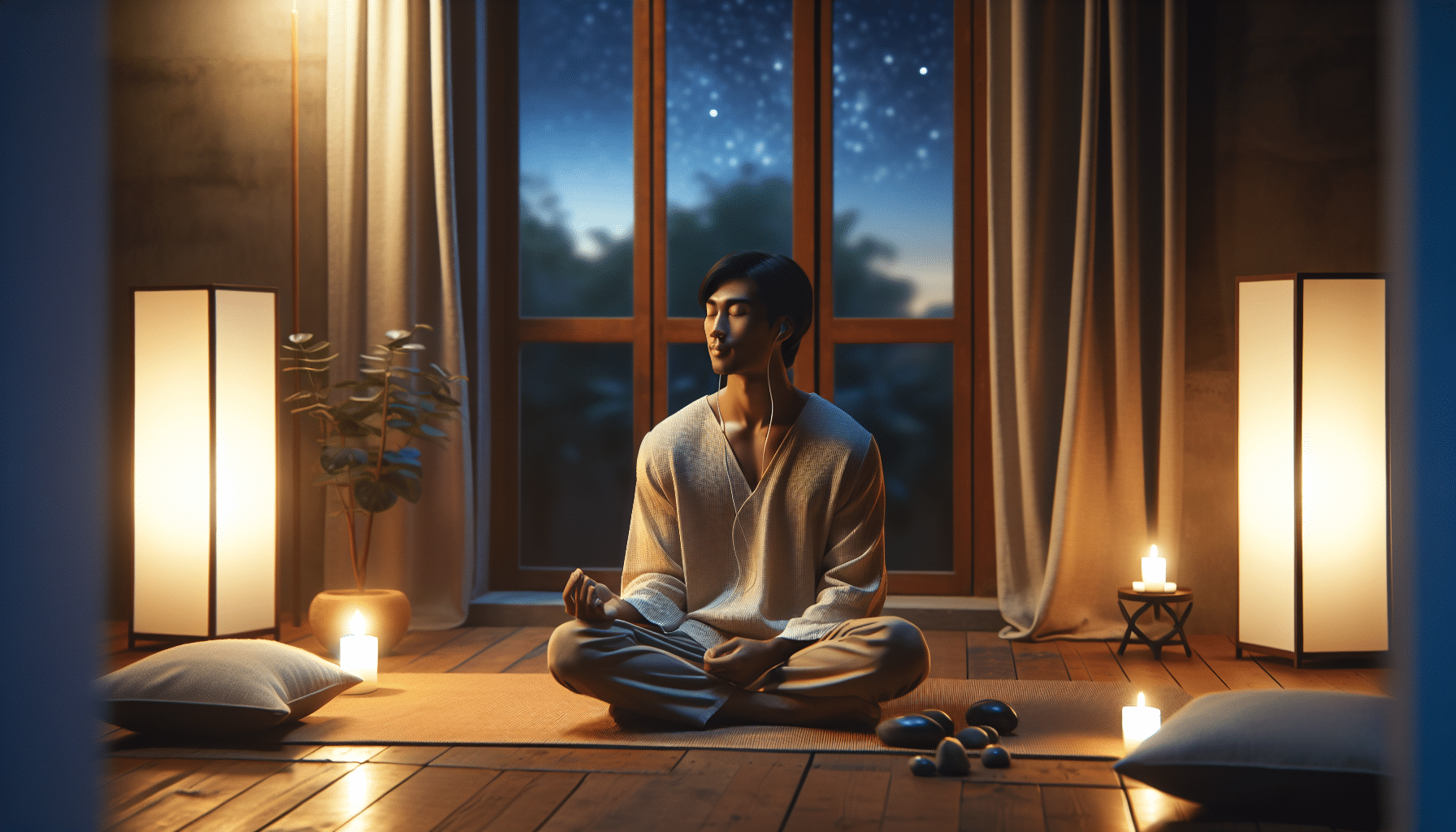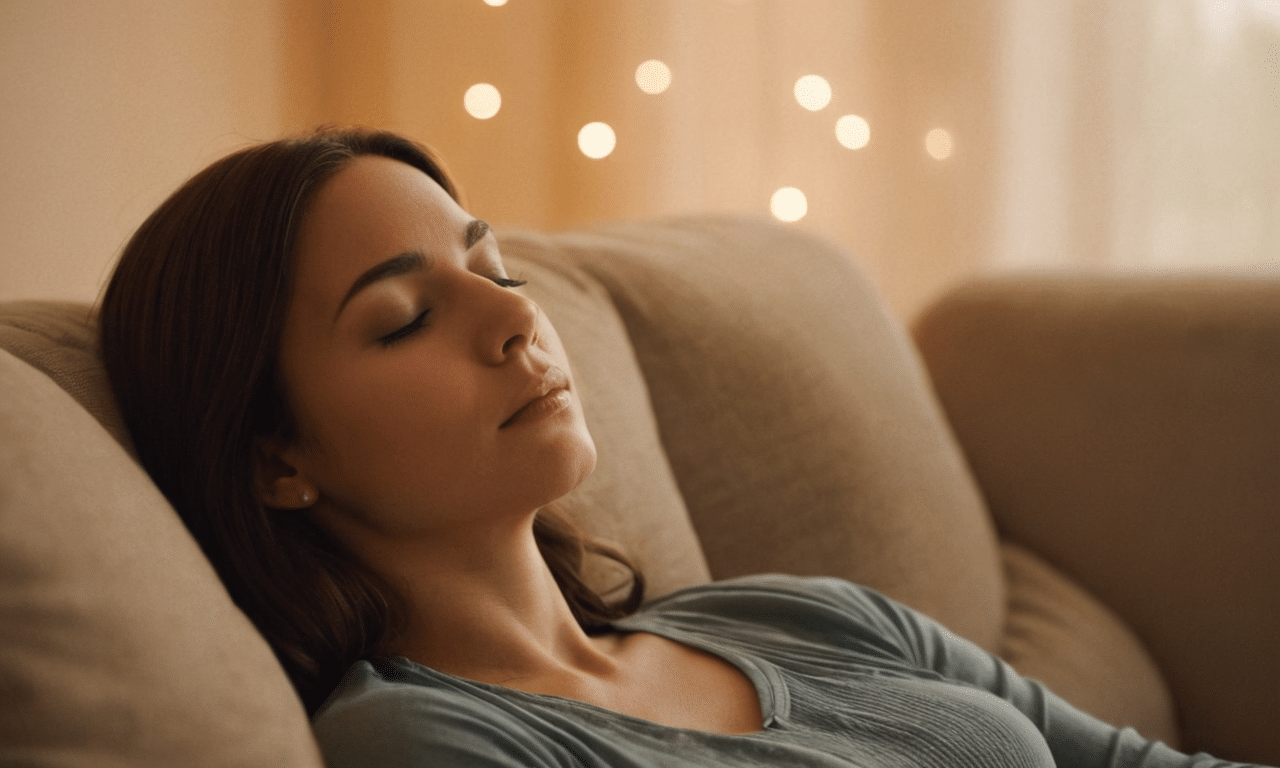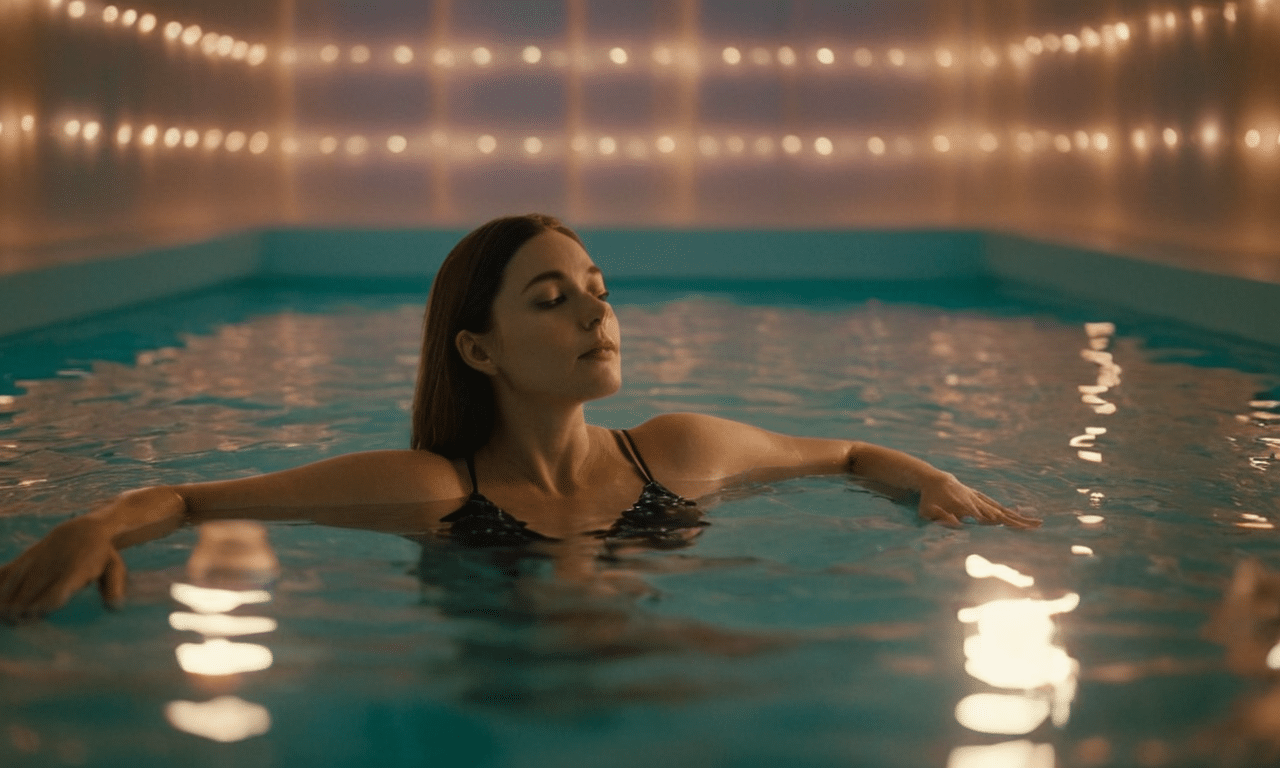Guided imagery is a relaxation tool that helps you manage stress by forming mental pictures that calm the mind and body 1. It’s different from meditation and hypnosis but uses similar principles to enhance mental health and wellness, which is especially helpful in today’s busy world.
What is guided imagery, and how does it work?
Guided imagery is a relaxation technique where individuals visualize calming and peaceful scenes in their minds. This mental practice helps reduce stress, manage anxiety, and support personal development by engaging the senses to evoke positive psychological and physical changes.
This blog is part of a series on “relaxation techniques.” The next blog is about biofeedback therapy.
Key Resources for Exploring Guided Imagery
- Audio Recordings: Find professionally guided sessions that you can listen to anywhere.
- Guided Imagery Scripts: Written prompts that help you visualize calming scenarios.
- Online Courses: Comprehensive programs teaching the techniques and benefits of guided imagery.
- Mobile Apps: Convenient access to guided sessions and daily practice tools.
- Books: In-depth guides from experts about the principles and practices of guided imagery.
- Workshops: Live sessions providing interactive experiences with guided imagery experts.
- YouTube Channels: Free visual and auditory content for beginners and advanced practitioners.
Discover the transformative power of mindfulness with our free downloadable mindfulness exercises pdf. Packed with practical exercises, this guide helps cultivate calm, enhance focus, and reduce stress. Perfect for integrating into your busy life, these easy-to-follow techniques are your first step toward a more mindful and peaceful daily routine.
The Basics of Guided Imagery
Guided imagery is a relaxation technique in which you visualize calming scenes to relax your mind and body. It involves sitting quietly and imagining pleasant settings like a beach or forest. This helps calm your nerves and reduce stress. Unlike meditation, guided imagery often involves a more directed form of visualization for stress relief and mental ease.
Many use guided imagery to manage symptoms of anxiety and stress. The technique encourages you to focus on positive images, replacing negative thoughts. This shift can decrease feelings of anxiety and improve your overall well-being. It’s a simple exercise you can do anywhere, requiring only a few minutes and imagination.
Whether you’re dealing with daily stress or more significant anxiety, guided imagery can help. Visualizing peaceful scenes can significantly reduce your stress and blood pressure levels. It’s a valuable tool for anyone looking to find a moment of peace in a busy day.
Benefits of Guided Imagery for Mental and Physical Health
Guided imagery offers numerous benefits for both your mental and physical health. It can reduce stress, anxiety, and symptoms related to high blood pressure and heart rate. By engaging in this practice, many find a significant decrease in their anxiety levels and an improvement in sleep quality.
Physically, the relaxation achieved through guided imagery can relieve tension headaches and contribute to better overall heart health. The technique helps lower blood pressure and reduce the risk of heart-related issues. Mentally, it aids in managing stress and can improve your emotional response to challenging situations.
| Technique | Primary Benefit | Recommended Practice Duration |
|---|---|---|
| Basic Visualization | Stress Reduction | 5-10 minutes |
| Progressive Muscle Relaxation | Anxiety Relief | 10-15 minutes |
| Sensory Imagery | Enhanced Mood | 5-10 minutes |
| Guided Imagery Scripts | Improved Sleep Quality | 15-20 minutes |
| Meditation Integration | Deep Relaxation | 20-30 minutes |
Guided imagery provides a powerful alternative for those looking for a non-pharmaceutical way to manage health. It uses the natural power of your mind to foster healing and peace, proving that your mental state can significantly affect your physical health.
Guided Imagery Techniques and How They Work
There are various guided imagery techniques, each with a unique way of helping you relax and manage stress. Some involve deep breathing and focusing on specific sensory experiences, such as the sound of waves or the smell of a forest. These techniques enhance your ability to visualize and calm your mind effectively.

Another popular technique is guided imagery scripts. These detailed descriptions lead you through a peaceful scenario. Following these scripts can steer your mind away from stressful thoughts and towards relaxation. They are especially helpful for beginners who struggle to guide their thoughts without assistance.
Whether you use audio recordings, scripts, or develop your imagery, the key is consistency. Regular practice enhances your ability to quickly enter a state of deep relaxation, helping you combat stress more effectively and maintain a calm demeanor in everyday life.
Step-by-Step Guide to Practicing Guided Imagery
Starting with guided imagery is simple. First, find a quiet place where you won’t be disturbed. Sit or lie down in a comfortable position and take a few deep breaths to relax your body. Close your eyes and visualize a place that makes you feel calm and happy.
As you settle into the scene, focus on the details: the sounds, the smells, and the sensations of your environment. Let these sensory experiences fill your mind, pushing out stressful thoughts. Continue to breathe deeply and allow the imagery to lead you into a deeper state of relaxation.
If your mind wanders, gently bring your focus back to the calming scene. You’ll find it easier to maintain concentration and enjoy the relaxation benefits more fully with practice. Each session can last from a few minutes to half an hour, depending on your schedule and needs.
Tips for Beginners to Get Started with Guided Imagery
For those new to guided imagery, starting simple is key. Begin with short sessions of about five minutes and gradually increase the duration as you become more comfortable with the practice. It’s also helpful to use guided imagery recordings initially to guide your experience.
Another tip is to practice regularly. Consistency is crucial for developing a more effective relaxation response. To maximize its benefits, try incorporating guided imagery into your daily routine, perhaps in the morning or before bedtime.
Lastly, don’t get discouraged if it feels difficult at first. Like any skill, guided imagery takes practice. Keep at it, and soon, you’ll be able to quickly find your inner calm and manage everyday stress more effectively.
Integrating Guided Imagery with Meditation and Hypnosis
Combining guided imagery with meditation and hypnosis can enhance its stress-relieving powers. Meditation deepens the relaxation effect, while hypnosis can help reinforce the positive messages of your imagery. Together, they create a robust framework for mental health.
Incorporating these practices can be as simple as alternating between them throughout the week. For instance, you might use guided imagery one day, meditate the next, and have a hypnosis session at the end of the week. This variety can keep your relaxation routine fresh and effective.
Experiment to find what combination works best for you. Each method has its unique benefits, and when used together, they can help you achieve an even deeper state of relaxation and significantly reduce your stress levels.
Personal Thoughts
Through my struggles with chronic stress, I discovered the power of guided imagery. It has been a game changer in managing my anxiety, offering me a much-needed escape and a method to calm my constantly alert mind.
Guided imagery has become a critical part of my toolkit for stress management. Sharing this technique on my platform is crucial, as it may offer others the same profound relief it has brought to my life.
Frequently Asked Questions
How can guided imagery improve sleep quality?
Guided imagery can enhance sleep quality by helping individuals relax and reduce bedtime anxiety. By visualizing calming images, the mind shifts focus from stressful thoughts, easing into a state conducive to sleep. This relaxation technique often leads to deeper, more restorative sleep.
What are the proven benefits of guided imagery?
Guided imagery has proven benefits, including reduced stress and anxiety, improved chronic pain management, and enhanced mental well-being. Regular practice can also lower blood pressure, alleviate symptoms of depression, and support overall emotional health.
Can guided imagery be used for anxiety relief?
Yes, guided imagery is an effective tool for anxiety relief. It encourages the mind to focus on positive, calming images, which can interrupt the cycle of anxious thoughts. This technique helps create a natural relaxation response, reducing feelings of anxiety.
How do you get started with guided imagery?
To start practicing guided imagery, find a quiet space, close your eyes, and take a few deep breaths to relax. Choose a peaceful scene you find soothing and focus on the details of that image, engaging all your senses to deepen the relaxation experience.
What is the role of guided imagery in therapy?
In therapy, guided imagery is used as a mind-body intervention to help patients manage stress, cope with trauma, and improve psychological well-being. It encourages positive thinking and can be integrated into various therapeutic settings to enhance emotional resilience.




